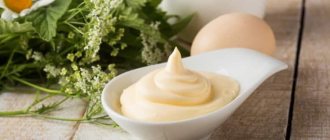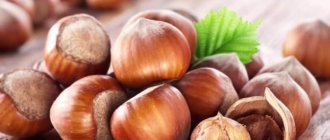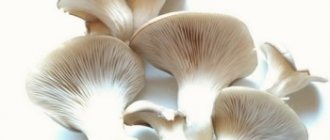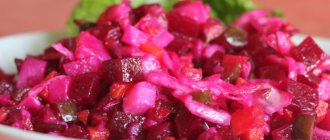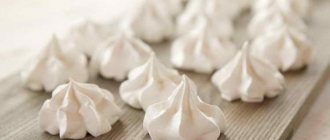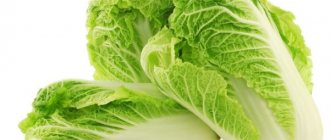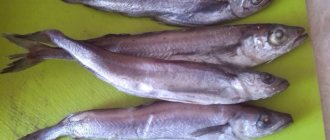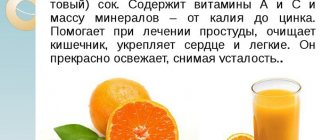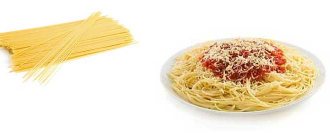Pasta made from durum wheat is used as the main product for making pasta, a national Italian dish. The boiled product is combined with tomato sauce and basil, sprinkling the finished dish with grated Parmesan. The average calorie content of boiled pasta is 112 kcal per 100 g of product, which allows you to include this dish in your daily diet.
The first mentions of pasta were recorded at the beginning of the 1st century AD. in Apicus's cookbook, which described a recipe for preparing a dish similar to pasta. It is known that the Arabs were engaged in the production of wide noodles. They kneaded the dough using water and wholemeal flour, and then dried the products on stones under the sun's rays.
In the 8th century, the Arabs who invaded Europe, along with new traditions, brought with them previously unknown dishes, including noodles, which were immediately appreciated by the inhabitants of the Sicilian island. By the 15th century, pasta had gained popularity throughout Italy. A century later, pasta became known throughout the world.
Kinds
Today, there are more than 350 forms of pasta, from which hundreds of different dishes are prepared. Depending on the shape, pasta is divided into types, the main of which are presented below.
| Name | Description |
| Spaghetti | Long pasta with a round cross-section with a diameter of 2 mm and a length of about 13 cm. Used cooked as an independent dish, or in combination with vegetables, meat, and fish. |
| Vermicelli | Thin, short pasta with a round cross-section and a diameter of 1.6 mm, used for preparing cold dishes or casseroles. |
| Capellini | Pasta with a diameter of about 0.88 mm and a length of up to 15 cm. They are similar to spaghetti, but have a thinner base. Pasta is used as a dressing for meat and vegetable broths, as well as for making pasta. |
| Fettuccine | Thin flat strips of dough with a diameter of 7 mm. The product is used to make pasta or soups. |
| Tagliatelle | A type of noodles in the form of thin strips with a diameter of 5-8 mm, formed from egg dough. The product acts as a ready-made dish with the addition of thick sauces made from beef, pork and veal. |
| Caserecce | Short pasta in the shape of a twisted Latin letter S, 5-6 mm long. |
| Penne | Pasta in the form of feather tubes, 10 mm in diameter and 4 cm in length. The boiled product is served as a separate dish, seasoned with sauce, or used to prepare salads. |
| Conciglione (shells) | Large shell-shaped pasta that is used to make pasta or used for stuffing with minced meat, vegetables or cheese. |
About choosing a useful product
In order for the paste to bring maximum benefits to the body, you need to know the rules for choosing the product in question.
Video
For this, the following factors are taken into account:
- it is important to pay attention to the instructions, where the KBZHU is written - the content of calories, proteins, fats and carbohydrates - in pasta recommended for weight loss there should be at least 10 g of protein per 100 g;
- good pasta is sold only in packages;
- the color should not be bright - this indicates the use of dyes;
- if there are white specks on the surface, it means that the purchase is rejected - this is low-quality flour that did not dissolve during the process of kneading the dough;
- a musty smell indicates improper storage of the product - it should not be consumed;
- packaging with pasta must be a sealed transparent plastic bag (it is important to be able to independently examine the contents of the bag);
- during cooking the pasta, no foam should form on the surface, the water should be clear, without additional shades;
- the cost of a quality product is above average.
The choice of form and manufacturer is carried out at your own discretion and financial capabilities.
Please note: Pasta produced by Makfa and Barilla are especially popular. The first one is affordable for most buyers. Barilla products are somewhat more expensive. Both offer durum wheat pasta.
Benefit
Boiled pasta from durum wheat is often included in the diet, due to the fact that they are a valuable source of complex carbohydrates.
Whole grain pasta, unlike regular pasta, is made from crushed wheat grains that cannot be sown.
This way, the large grain shells, which contain antioxidants and B vitamins, retain their benefits. Whole grain flour also contains crystalline starch, which retains protein, so the product is well absorbed and provides the body with the necessary energy.
Other beneficial properties of pasta:
- contain unsaturated fats, which are easily broken down and do not have the ability to accumulate;
- contain fiber, which improves intestinal function;
- rich in slow sugars that replenish glycogen stores in muscles, thereby ensuring long-term saturation.
How to calculate the calorie content of boiled pasta and what does it depend on?
The simplest and most reliable way, which nutritionists advise to use, is to weigh the pasta before cooking and calculate the energy value of this portion. True, the idea will only work if you cook exclusively for yourself, and do not add some from a common pan. But often this is not enough, because in Russia they rarely eat pasta without additives, unlike in Italy. And here a lot of questions arise:
- How many calories are in boiled pasta with butter when it is added to the water to prevent the pasta from sticking together? While during frying the oil is often completely absorbed, here it rather coats the pasta and is absorbed minimally. In addition, the product is washed under running water afterwards. As a result, add approximately 20-30% of the calorie content of the taken portion of butter to the calorie content of the pasta.
- How many calories are in boiled pasta that was cooked in meat broth? This is a common practice that is resorted to to make the taste of a dish more interesting. Broth, unlike oil, is absorbed much more strongly, but not so much as to significantly increase the “weight” of the dish. Add the calorie content of 100 g of pasta to the calorie content of a hundred gram serving of broth.
Harm
Boiled pasta from durum wheat, consumed in its pure form without adding fatty sauces, is a dietary product. However, the calorie content of the finished dish almost doubles if you combine pasta with dressings based on fatty meats, cheese and cream.
Such combinations of products are not suitable for the diet of a person losing weight and significantly slow down the process of losing weight. Frequent consumption of pasta is contraindicated for people suffering from chronic constipation.
PP version of Bolognese pasta
To prepare the original dish, minced pork or beef is used, fried with the addition of olive oil. To significantly reduce the calorie content of pasta, it is enough to find an alternative to some products and adapt the recipe to your dietary intake.
Composition of ingredients
- chicken breast – 500 g;
- durum wheat pasta – 400 g;
- medium-sized onion – 1 pc.;
- medium-sized carrots – 1 pc.;
- celery – 1 stalk;
- tomato – 1 pc.;
- olive oil – 1 tbsp. l.;
- Provençal herbs - to taste;
- salt - to taste.
Chicken fillet can be replaced with turkey fillet - the minced meat will be drier in this case. In order to give it juiciness, just add a little water during the stewing process.
Step-by-step cooking process
- Chicken fillet must be cut into large pieces and passed through a meat grinder or chopped using a blender.
- Onions and celery stalks should be cut into small cubes, grate the carrots on a fine grater.
- Place the pan on the fire, pour in 1 tbsp. l. olive oil and add chopped vegetables. Fry the mixture for 3-5 minutes, stirring constantly.
- Pour boiling water over the tomato and remove the peel, then cut into small cubes and add to the vegetables; add salt to the vegetable mixture.
- Add the minced chicken and distribute it over the pan, breaking up any lumps. Pour 50 ml of water into the resulting mixture, reduce heat and cover the pan with a lid. Simmer for about 15 minutes. If necessary, add another 50 ml of water.
- While the dressing is being prepared, you need to prepare the pasta. Place spaghetti in boiling salted water and cook until tender.
- Place the boiled spaghetti on a plate and spread the prepared dressing on top. Sprinkle the dish with Provençal herbs and add a sprig of rosemary.
Pasta: benefits and harm for men
Enlarge image
The male body is less susceptible to exogenous stimuli. But with excessive consumption, you can expect only harm without benefit.
Benefit
Among the conditionally useful properties:
- B vitamins increase resistance to stress and strengthen the nervous system.
- Pasta promotes muscle growth.
- Amino acids such as tryptophan improve sleep and prevent the development of anxiety. This is especially important when you consider the degree of daily stress on a man.
The properties are conditionally useful, since it is enough to slightly increase the portion to encounter the opposite effects.
Harm
Among the harmful properties:
- High likelihood of obesity. Especially in men who are prone to obesity.
- The ability to disrupt hormonal levels. Testosterone is transformed into estrogens, and fat reserves cannot be removed so easily.
- High calorie content with insufficient nutritional value.
Pasta can be consumed in quantities of up to 120 grams per day.
Dietary pasta with herbs
Pasta made from durum wheat goes well with cheese and herbs. This version of the dish can be used as dinner. To prepare pasta, it is better to use spaghetti or fettuccine nests.
Composition of ingredients
- fettuccine nests – 500 g;
- parsley – 100 g;
- lemon juice – 30 ml;
- parmesan – 50 g;
- 1 clove of garlic;
- salt – ½ tsp;
- olive oil – 1 tbsp. l.
If Parmesan is not available, it can be replaced with any light hard cheese.
Step-by-step cooking process
- First you need to prepare the ingredients. The parsley needs to be coarsely chopped and the parmesan grated on a fine grater. Squeeze juice from half 1 lemon.
- Place all the chopped ingredients in a blender bowl, add garlic, lemon juice and olive oil. Grind the mass to a pasty state.
- Place a pan of salted water on the fire and bring to a boil. Then lay out the fettuccine nests and boil until tender for 5 minutes.
- Drain the water from the boiled pasta and combine it with the prepared sauce, mix thoroughly. Serve the dish hot, sprinkled with grated Parmesan.
Soft wheat varieties
Enlarge image
Pasta made from soft wheat varieties has much less gluten, gluten, and fiber. But there are more fast carbohydrates, so with excessive consumption there is a risk of rapid weight gain.
Composition of soft wheat pasta:
| Vitamin, mineral, macronutrient | Amount of substance per 100 grams of pasta |
| Fats | 1.8 g |
| Squirrels | 12 g |
| Carbohydrates | 74 g |
| Calorie content | 342 kcal |
| Cellulose | 2.9 g |
| Calcium | 25 mg |
| Iron | 2.1 mg |
| Phosphorus | 190 mg |
| Potassium | 250 mg |
| Sodium | 3 mg |
| Vitamin B1 (thiamine) | 122 mg |
| Vitamin B2 (riboflavin) | 0.21 mg |
| Vitamin B3 (niacin) | 3.1 mg |
| Vitamin B6 | 0.17 mcg |
| Vitamin B9 (folic acid) | 34 mcg |
Spaghetti with champignons
Boiled pasta from durum wheat (the calorie content of the product allows it to be used in a dietary diet) goes well with mushroom dressings. To prepare pasta with mushrooms, use champignons, oyster mushrooms or chanterelles.
Composition of ingredients
- 100 g spaghetti;
- 150 champignons;
- 1 medium sized onion;
- 1 clove of garlic;
- 2 tbsp. l. sour cream 15%;
- 1 tbsp. l. olive oil;
- salt to taste
Sour cream can be replaced with cream with a fat content of 10-20%, and any type of pasta can be used instead of spaghetti.
Step-by-step cooking process
- The champignons need to be rinsed under water, wiped dry with a paper napkin or towel, and then cut into thin slices.
- Chop the onion with a knife and finely chop the garlic clove.
- Grease a hot frying pan with olive oil and add onions. You need to sauté the vegetable until translucent, then add the chopped mushrooms and simmer the mixture under the lid for about 10 minutes. Dilute sour cream with 50 ml of water and salt, add to the mushroom mixture. Simmer for another 2 minutes. The gas station is ready.
- Spaghetti should be boiled in salted water until tender. Place boiled pasta on a plate and add creamy mushroom dressing.
Whole grain pasta
Products made from unsifted crushed grains are rich in B vitamins, contain magnesium, iron and antioxidants. Such pasta, whose calorie content is significantly lower than those made from wheat flour, is a dietary product. For example, these pasta contains 3-5 times more vitamins B and E than regular pasta. The glycemic index does not differ much, but it is still preferable to eat whole grain pasta than products made from regular flour. Having determined how many calories are in boiled pasta, you can safely include whole grain products in your diet.
Shrimp pasta
The combination of pasta with seafood is a win-win option for a delicious dish. You can supplement the boiled pasta not only with shrimp, but also with sea cocktail, octopus or squid.
Composition of ingredients
- 200 g penne pasta;
- peeled shrimp – 150 g;
- large red onion – 1 pc.;
- olive oil – 3 tbsp. l.;
- any hard cheese – 50 g;
- salt – ½ tsp.
Step-by-step cooking process
- The onion must be finely chopped into cubes, and the hard cheese must be grated on a fine grater.
- Heat a frying pan greased with olive oil and add chopped onion. Fry it for 2 minutes over medium heat.
- When the onion becomes transparent, add shrimp and salt to it, simmer the mixture under the lid for about 5-7 minutes.
- After the shrimp are ready, add grated cheese to the pan and mix thoroughly. After 2 minutes, remove the pan with the mixture from the heat.
- Penne should be boiled in salted water until half cooked. Then add the boiled pasta to the frying pan with the seafood, mix thoroughly and simmer over low heat under the lid for about 2 minutes.
How many calories are in boiled macaroni and cheese?
If there are no questions about the intrinsic energy value of pasta - even after cooking with salt, the indicator remains the same, then as soon as various additives appear in the dish, you have to calculate the numbers again. For mac and cheese, calorie content is difficult to predict because it all depends on the type of cheese. This dairy product today has several varieties:
- Soft cheeses. Many French cheeses with a liquid center (Brie, Camembert), as well as with mold. Most of these cheeses have fat content in the range of 40-55%, and calorie content - 290-353 kcal. This also includes ricotta (Italians use it as cottage cheese) and mascarpone, whose calorie content is 174 kcal and 412 kcal (fat content is about 80%, mascarpone is made from cream), respectively.
- Brine. Brynza, feta, as well as many favorite suluguni, Adyghe and mozzarella. All these cheeses have a fat content above 40%, although “light feta cheese” (30%) is found. They are often added to salads or baked goods. Calorie content is in the range of 208-290 kcal per 100 g.
- Semi-solid. This includes the familiar Russian, Dutch, Swiss, and Cheddar and Gouda. The largest group of cheeses with a fat content of 40-60% and a calorie content of 334-360 kcal.
- Solid. Parmesan, Grana Padano, Pecorino, Dziugas are the most famous long-aging cheeses. Their fat content is in the range of 25-38%, but the calorie content is quite high: 384-419 kcal. But due to their hardness, they are much lighter than other cheeses, so less is used directly for pasta. In terms of volume, 10 g of Parmesan is more than 10 g of Russian cheese.
Separately, it is worth mentioning Tofu cheese, which is prepared on the basis of soy milk, so its calorie content is several times lower than that of other cheeses - about 75 kcal per 100 g.
If we take the average calorie content of cheese without regard to the group - 320 kcal, and assume that 1 serving of pasta (80 g of dry product) takes approximately 10 g of cheese, it turns out that there are 312 kcal per serving. But you need to take into account that many housewives also add vegetable or butter, as well as an egg, to this dish. As a result, another 100-110 kcal is added (1 egg and 1 tsp of oil).
Pasta salad with vegetables
Boiled pasta from durum wheat (the calorie content of the product is halved after cooking) can be used to prepare light vegetable salads.
Composition of ingredients
- fusilli (spirals) – 100 g;
- cherry tomatoes – 5 pcs.;
- sweet onion – 1 pc.;
- dill greens – 3 sprigs;
- olive oil – 2 tbsp. l.;
- lemon juice – 2 tbsp. l.;
- garlic – 2 cloves;
- salt to taste;
- Provencal herbs
To make the salad look more interesting, colored spirals are used to prepare it.
Step-by-step cooking process
- Pasta should be boiled in salted water until tender. This usually takes 5-7 minutes.
- Cherry tomatoes must be cut into halves, and the onion must be finely diced. 2 heads of garlic need to be passed through a press.
- Next, you can start preparing the sauce. In a separate container you need to combine lemon juice, olive oil, chopped garlic and chopped dill. The resulting mixture should be supplemented with salt and Provençal herbs.
- In a deep bowl, mix boiled pasta, tomatoes and onions, add salad dressing and mix thoroughly. The finished dish can be sprinkled with grated cheese.
Types of pasta
Pasta is made from a dough using wheat flour and water. As a result, the product can be classified as complex carbohydrates necessary for the body due to prolonged saturation and energy production for normal life. Nutritionists do not recommend using varieties for quick cooking, but giving preference to pasta made from durum wheat. At the moment, pasta varies in composition, shape and even color.
Among the long varieties there are:
- vermicelli;
- spaghetti;
- spaghettini;
- fettuccine;
- capellini, etc.
Among the short pasta products, the following varieties are distinguished:
- tortiglioni;
- maccheroni;
- cavatappi, etc.
There are also curly varieties:
- farfalle (we call them “butterflies”);
- conchiglie (or “shells”);
- capeletti (similar to small Russian dumplings), etc.
As a result of the huge number of varieties, one can count more than 200 pasta dishes, the cooking features of which should be based on reducing calories in order to lose weight or maintain a slim body.
Video
Spaghetti with canned tuna
A dressing with the addition of canned tuna can be added not only to spaghetti, but also to any other pasta.
Composition of ingredients
- spaghetti – 300 g;
- canned tuna in its own juice – 1 can;
- tomatoes – 1 pc.;
- bell pepper – 1 pc.;
- onion – 1 pc.;
- hard cheese – 30 g;
- olive oil – 2 tbsp. l.
Step-by-step cooking process
- Tomatoes and onions must be cut into small cubes, and bell peppers into half rings.
- Grease a frying pan with olive oil, put on fire and add chopped vegetables. Fry the mixture over medium heat for 3-5 minutes, stirring vigorously.
- Canned tuna should be removed from the can, lightly mashed with a fork and added to the fried vegetables. Simmer covered for about 5 minutes.
- Boil the spaghetti in salted water until tender. Add the pasta to the pan with the tuna and vegetables and stir well. Serve the dish with grated cheese.
Menu for diet
To make the weight loss process comfortable and not have a negative effect on the body, it is important to choose a balanced, healthy diet, which consists of a list of essential products:
- vegetables;
- fruits;
- meat;
- seafood;
- whole grain pasta;
- dairy products;
- cereals for making porridge;
- vegetable oils.
Here are several diet options for weight loss in which you can eat boiled pasta at any meal:
Option 1
- Breakfast: 200 g of oatmeal in water with the addition of ½ banana and 15 g of coconut.
- Snack: a handful of walnuts (20 g) and 1 green apple.
- Lunch: 150 g shrimp pasta, supplemented with 150 g spinach salad, cucumbers and 2 tbsp. l. olive oil.
- Dinner: light pumpkin soup.
Option 2
- Breakfast: 1 serving of cheesecakes (200 g cottage cheese, 1 egg, 30 g semolina, vanillin on the tip of a knife).
- Snack: light fruit salad dressed with unsweetened yogurt (½ apple, ½ banana, 1 tangerine cut into cubes and mix with yogurt).
- Lunch: chicken breast stuffed with cottage cheese and herbs.
- Dinner: 200 g of dietary pasta with herbs.
In order to choose truly high-quality pasta, you need to pay attention to the following product characteristics:
- characteristic natural yellowish or golden color;
- the presence of 11 g of protein per 100 g: the higher the indicator, the better the quality of the pasta;
- the presence of a label indicating “from durum wheat”;
- absence of a large number of crushed pasta elements at the bottom of the package.
After quality pasta has been carefully selected, it must be properly cooked so that it retains its shape and also does not lose its beneficial properties.
It is important to follow these steps:
- during cooking, add pasta exclusively to boiling water, observing the ratio: 100 g of dry product per 1 liter of liquid;
- it is necessary to boil pasta in a container with a volume of at least 3-4 liters;
- the average cooking time for durum wheat pasta is 7-9 minutes;
- Ready-made pasta does not require rinsing under running water; just drain the excess liquid from the container and mix well.
Boiled pasta from durum wheat has maximum beneficial properties when prepared “al dente” and retains its elasticity even when cooked. It must be remembered that the calorie content and glycemic index of the finished product depend on how much the pasta is boiled: the softer the dough of the boiled pasta, the higher the calorie content.
Recipe for boiled pasta without oil. Calorie, chemical composition and nutritional value.
Nutritional value and chemical composition of “Boiled pasta without oil.”
The table shows the nutritional content (calories, proteins, fats, carbohydrates, vitamins and minerals) per 100 grams of edible portion.
| Nutrient | Quantity | Norm** | % of the norm in 100 g | % of the norm in 100 kcal | 100% normal |
| Calorie content | 122.5 kcal | 1684 kcal | 7.3% | 6% | 1375 g |
| Squirrels | 4.7 g | 76 g | 6.2% | 5.1% | 1617 g |
| Fats | 0.6 g | 56 g | 1.1% | 0.9% | 9333 g |
| Carbohydrates | 24.7 g | 219 g | 11.3% | 9.2% | 887 g |
| Alimentary fiber | 1.6 g | 20 g | 8% | 6.5% | 1250 g |
| Water | 83.9 g | 2273 g | 3.7% | 3% | 2709 g |
| Ash | 0.149 g | ~ | |||
| Vitamins | |||||
| Vitamin B1, thiamine | 0.047 mg | 1.5 mg | 3.1% | 2.5% | 3191 g |
| Vitamin B2, riboflavin | 0.012 mg | 1.8 mg | 0.7% | 0.6% | 15000 g |
| Vitamin B4, choline | 22.72 mg | 500 mg | 4.5% | 3.7% | 2201 g |
| Vitamin B5, pantothenic | 0.13 mg | 5 mg | 2.6% | 2.1% | 3846 g |
| Vitamin B6, pyridoxine | 0.069 mg | 2 mg | 3.5% | 2.9% | 2899 g |
| Vitamin B9, folates | 8.654 mcg | 400 mcg | 2.2% | 1.8% | 4622 g |
| Vitamin E, alpha tocopherol, TE | 0.649 mg | 15 mg | 4.3% | 3.5% | 2311 g |
| Vitamin H, biotin | 0.874 mcg | 50 mcg | 1.7% | 1.4% | 5721 g |
| Vitamin RR, NE | 1.2548 mg | 20 mg | 6.3% | 5.1% | 1594 g |
| Niacin | 0.431 mg | ~ | |||
| Macronutrients | |||||
| Potassium, K | 30.34 mg | 2500 mg | 1.2% | 1% | 8240 g |
| Calcium, Ca | 11.53 mg | 1000 mg | 1.2% | 1% | 8673 g |
| Silicon, Si | 1.731 mg | 30 mg | 5.8% | 4.7% | 1733 g |
| Magnesium, Mg | 7.81 mg | 400 mg | 2% | 1.6% | 5122 g |
| Sodium, Na | 2.07 mg | 1300 mg | 0.2% | 0.2% | 62802 g |
| Sera, S | 32.64 mg | 1000 mg | 3.3% | 2.7% | 3064 g |
| Phosphorus, P | 29.4 mg | 800 mg | 3.7% | 3% | 2721 g |
| Chlorine, Cl | 36.01 mg | 2300 mg | 1.6% | 1.3% | 6387 g |
| Microelements | |||||
| Iron, Fe | 0.646 mg | 18 mg | 3.6% | 2.9% | 2786 g |
| Yod, I | 0.65 mcg | 150 mcg | 0.4% | 0.3% | 23077 g |
| Cobalt, Co | 0.692 mcg | 10 mcg | 6.9% | 5.6% | 1445 g |
| Manganese, Mn | 0.2527 mg | 2 mg | 12.6% | 10.3% | 791 g |
| Copper, Cu | 304.04 mcg | 1000 mcg | 30.4% | 24.8% | 329 g |
| Molybdenum, Mo | 5.452 mcg | 70 mcg | 7.8% | 6.4% | 1284 g |
| Fluorine, F | 202.26 mcg | 4000 mcg | 5.1% | 4.2% | 1978 |
| Chromium, Cr | 0.95 mcg | 50 mcg | 1.9% | 1.6% | 5263 g |
| Zinc, Zn | 0.3063 mg | 12 mg | 2.6% | 2.1% | 3918 g |
| Digestible carbohydrates | |||||
| Starch and dextrins | 25.486 g | ~ | |||
| Mono- and disaccharides (sugars) | 0.8 g | max 100 g | |||
| Galactose | 0.048 g | ~ | |||
| Glucose (dextrose) | 0.039 g | ~ | |||
| Maltose | 0.723 g | ~ | |||
| Sucrose | 0.039 g | ~ | |||
| Fructose | 0.013 g | ~ | |||
| Essential amino acids | |||||
| Arginine* | 0.173 g | ~ | |||
| Valin | 0.208 g | ~ | |||
| Histidine* | 0.087 g | ~ | |||
| Isoleucine | 0.19 g | ~ | |||
| Leucine | 0.355 g | ~ | |||
| Lysine | 0.108 g | ~ | |||
| Methionine | 0.069 g | ~ | |||
| Methionine + Cysteine | 0.156 g | ~ | |||
| Threonine | 0.134 g | ~ | |||
| Tryptophan | 0.043 g | ~ | |||
| Phenylalanine | 0.221 g | ~ | |||
| Phenylalanine+Tyrosine | 0.329 g | ~ | |||
| Nonessential amino acids | |||||
| Alanin | 0.143 g | ~ | |||
| Aspartic acid | 0.147 g | ~ | |||
| Glycine | 0.151 g | ~ | |||
| Glutamic acid | 1.346 g | ~ | |||
| Proline | 0.424 g | ~ | |||
| Serin | 0.221 g | ~ | |||
| Tyrosine | 0.108 g | ~ | |||
| Cysteine | 0.087 g | ~ | |||
| Saturated fatty acids | |||||
| Saturated fatty acids | 0.1 g | max 18.7 g | |||
| 16:0 Palmitinaya | 0.078 g | ~ | |||
| 18:0 Stearic | 0.004 g | ~ | |||
| Monounsaturated fatty acids | 0.061 g | min 16.8 g | 0.4% | 0.3% | |
| 16:1 Palmitoleic | 0.004 g | ~ | |||
| 18:1 Oleic (omega-9) | 0.056 g | ~ | |||
| Polyunsaturated fatty acids | 0.186 g | from 11.2 to 20.6 g | 1.7% | 1.4% | |
| 18:2 Linolevaya | 0.177 g | ~ | |||
| 18:3 Linolenic | 0.004 g | ~ | |||
| Omega-6 fatty acids | 0.2 g | from 4.7 to 16.8 g | 4.3% | 3.5% |
The energy value of boiled pasta without oil is 122.5 kcal.
Primary Source: Created in the application by the user. Read more.
** This table shows the average levels of vitamins and minerals for an adult. If you want to know the norms taking into account your gender, age and other factors, then use the “My Healthy Diet” application.
